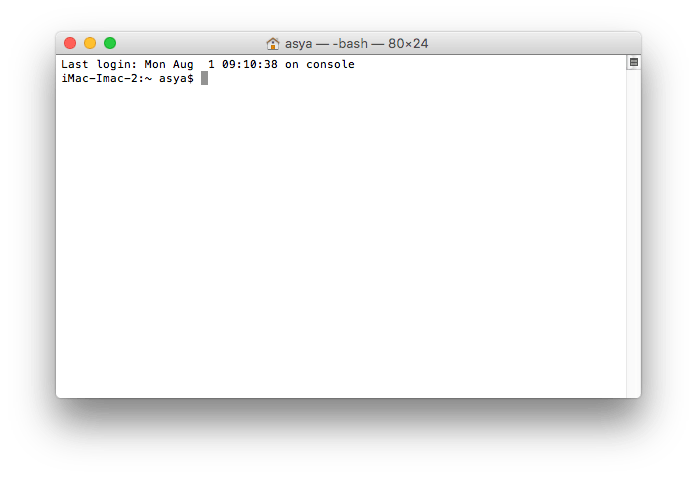

Move all PNG files from current folder to a different folder Optional -i flag to warn you before overwriting the file Move a file to the folder, possibly by overwriting an existing file Prompts you before copying a file with a warning overwrite messageĭelete a file (This deletes the file permanently use with caution.)ĭelete a file only when you give confirmationĭelete multiple files without any confirmation
ALL MAC TERMINAL COMMANDS FREE
Replace sk* with sm* to list directories in MBĬalculate free disk space in powers of 1,000 (as opposed to 1,024)Ĭreate a folder with a space in the filenameĭelete a folder (only works on empty folders)Ĭopy a file to the folder and rename the copied fileĬopy a folder to a new folder with spaces in the filename List files and folders, totaling the size including the subfolders. Human readable output of all files in a directory List usage for each subdirectory and its contents List detailed directory contents, including hidden files List the file names with size, owner, and flags Long listing with human readable file sizes in KB, MB, or GB List the files sorted by time modified (most recent first) Includes file mode, owner and group name, date and time file was modified, pathname, and more Output the list of files in one entry per line formatĭisplay a / (slash) immediately after each path that is a directory, * (asterisk) after executable programs or scripts, and after a symbolic link The Mac Terminal Commands Cheat Sheet List Directory Contentsĭisplay the name of files and subdirectories in the directory We’re here to help with a detailed cheat sheet of Mac Terminal commands you can use to unlock enhanced productivity on your system. With so many Mac commands, it’s often difficult to remember and use them all. It gives you more power and control over your system.Setting up a cron job will handle this automatically. You can manage files, folders, and file archives in an automated manner.They’re way more powerful than Spotlight. When you’re having difficulty searching for files in Spotlight, you can turn to Unix search tools.There are dozens of open source and freely available Unix-based apps.MacOS is an intuitive operating system, so you don’t have to spend lot of time learning the basics Knowing this, why should you learn and take advantage of the Unix command line available on your Mac? We have four good reasons: Our mega cheat sheet of Mac terminal commands provides a great reference for all the important commands you should know.


 0 kommentar(er)
0 kommentar(er)
